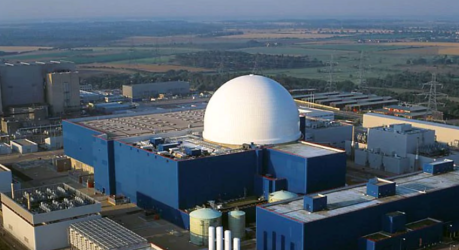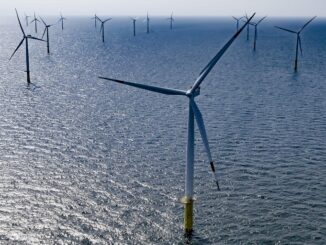
September 11, 2022 by stopthesethings Leave a Comment
Necessity is the mother of energy policy reinvention, and safe, reliable and affordable nuclear is at the heart of it.
In Britain, thanks to its obsession with heavily subsidised and chaotically intermittent wind and solar, power prices are already at astronomical levels. Its political betters are ruing the day they determined to trash their coal-fired power fleet and snub nuclear, altogether.
It wasn’t always thus. Indeed, in 2005, then Labour PM, Tony Blair mocked his Conservative opponent, David Cameron about the need to maintain Britain’s existing nuclear fleet and to build more of the same.
As Judith Sloan details below, power-starved Brits would not be in the disastrous predicament they’re in now, had Blair’s prescient advice been put into action, back then.
A lesson as UK struggles to keep the lights onThe AustralianJudith Sloan6 September 2022
It was British prime minister Tony Blair who suggested to opposition leader David Cameron that he might need to rustle up a nuclear power plant in the event of a shortfall in electricity. The year was 2005 and Blair was convinced that Britain needed to bolster its nuclear electricity capacity.
The point he was making is that you don’t rustle up anything when it comes to grid-scale electricity. As he put it, “The facts are stark. By 2025, if current policy is unchanged, there will be a dramatic gap in our targets to reduce CO2 emissions and we will become heavily dependent on gas … If we don’t take these long-term decisions now we will be committing a serious dereliction of our duty to the future of this country.”
With careful planning, Blair thought it possible that nuclear plants could generate 40 per cent of Britain’s electricity requirements, up from the figure at the time of 20 per cent. When the Conservatives took office in 2010, the government dithered about the future of electricity generation aside from supporting wind farms. The view was taken that nuclear plants would have to stand on their own feet – as opposed to the subsidisation of renewable energy – and would be denied any government funding or support.
After years of planning it was finally decided the Hinkley Point C plant would go ahead using a French design and funded by the Chinese. At the time, Theresa May, the relevant minister, struck what was seen as an unfavourable deal for consumers, guaranteeing a strike price of just under £100 per megawatt hour (2012 prices) for 35 years. From today’s vantage, this is looking like a good deal.
Even so, the delay in the completion of the plant has been substantial; it is expected to be operational in 2027, even though at one point there was talk of it opening next year. (It was first considered in the early 1990s; it will be the first new nuclear plant in Britain since 1995.)
The government also is about to sign off on another nuclear plant, Sizewell C, but this will not be up and running for years. There is discussion of small nuclear modular reactors – Rolls-Royce is at the forefront of their development – being used to generate electricity but 2030 is seen as the earliest date for their start.
It’s not only in Britain where rejigging an electricity grid doesn’t turn on a dime. It’s easier to turn the Queen Mary around than to ensure reliable and affordable electricity within government-imposed guidelines on emissions.
Ten years ago in Britain, there was a high degree of confidence that the exit of the remaining coal-fired plants would not cause any problems because gas and renewables would easily fill the gap. In 2012, the Energy Department advised that an additional 26 gigawatts of gas-fired generation would be needed by 2030, with the energy minister promising 20 new gas plants. This was revised down to 14GW in 2015 and to 6GW two years later. The one gas storage facility in Britain – the Rough facility – was closed down in 2017 on the advice of bureaucrats. (It may be reopened in the near future.)
In the meantime, official communications increasingly shied away from any technical discussion of the need to maintain a stable grid generating affordable electricity to catchphrases such as “seizing the opportunities of clean growth”. Emphasis switched from onshore wind farms to (much more expensive) offshore wind farms and solar installations. All the time an emerging lack of supply in the electricity system in Britain was becoming apparent, with the Institution of Mechanical Engineers belling the cat in 2016.
Assumptions about windless periods became part of the debate but the Conservative government went to great lengths to cover it up. Last year, the gap between supply and demand reached a perilously small amount as the result of a failed interconnector and a series of windless days. Unsurprisingly, the price of electricity has soared, with business customers worse affected initially. Energy prices paid by businesses rose by 60 per cent in real terms between 2010 and 2020. The retail price cap is about to rise by 80 per cent, with an average household bill of about $6000 a year.
One reason to write about the dire situation in Britain is the strong parallels with Australia. In fact, the key operational features of our national electricity market were copied from Britain. Where the Australian Energy Market Operator was once sanguine about the shift from coal-fired generation, which has dominated supply as well as providing needed ancillary services (inertia, frequency control), its latest report has a different message.
Titled Electricity Statement of Opportunity, the latest version is full of concern about the premature closure of coal-fired plants, delays in transmission projects, further delays in Snowy 2.0 and the lack of storage in the system. Into this mix comes an inevitable delay to the commissioning of the government-owned Kurri Kurri gas-fired plant as the federal government attempts to impose green hydrogen from the get-go. (Generating electricity in this way is widely acknowledged as incredibly inefficient.)
The disquiet on the part of AEMO is well founded. The projections of the exit of coal from the system by 2030 range from 8GW to 14GW. Anything much above the lower figure will place strains on the system. At the same time, the higher figure should not surprise because government subsidisation of renewables inevitably undermines the business model of 24/7 coal-fired generation.
As for the transmission system, the delays in all the major projects as well as the cost blowouts were documented on these pages by experts Ted Woodley and Simon Bartlett. The projects have been identified by AEMO as critical, yet all of them are billions of dollars over budget and face substantial delays. Local communities are becoming increasingly incensed by the imposition of large pylons cutting a swath through their properties and landscape. This will inevitably delay the projects.
The broader point here is that people living in rural and regional areas are expected to bear this external cost so city folk can enjoy more renewable generation. Mind you, an electron is an electron. When the system fails, we all bear the cost.
The lesson of the British experience, which is several years ahead of us, is that nothing can replace careful long-term planning when it comes to electricity grids. But it is a lesson our politicians wilfully ignore. The most recent rejection by the state energy ministers of a capacity market using fossil fuels highlights the extent to which wishful thinking has replaced hard-headed, cautious analysis and action.The Australian



